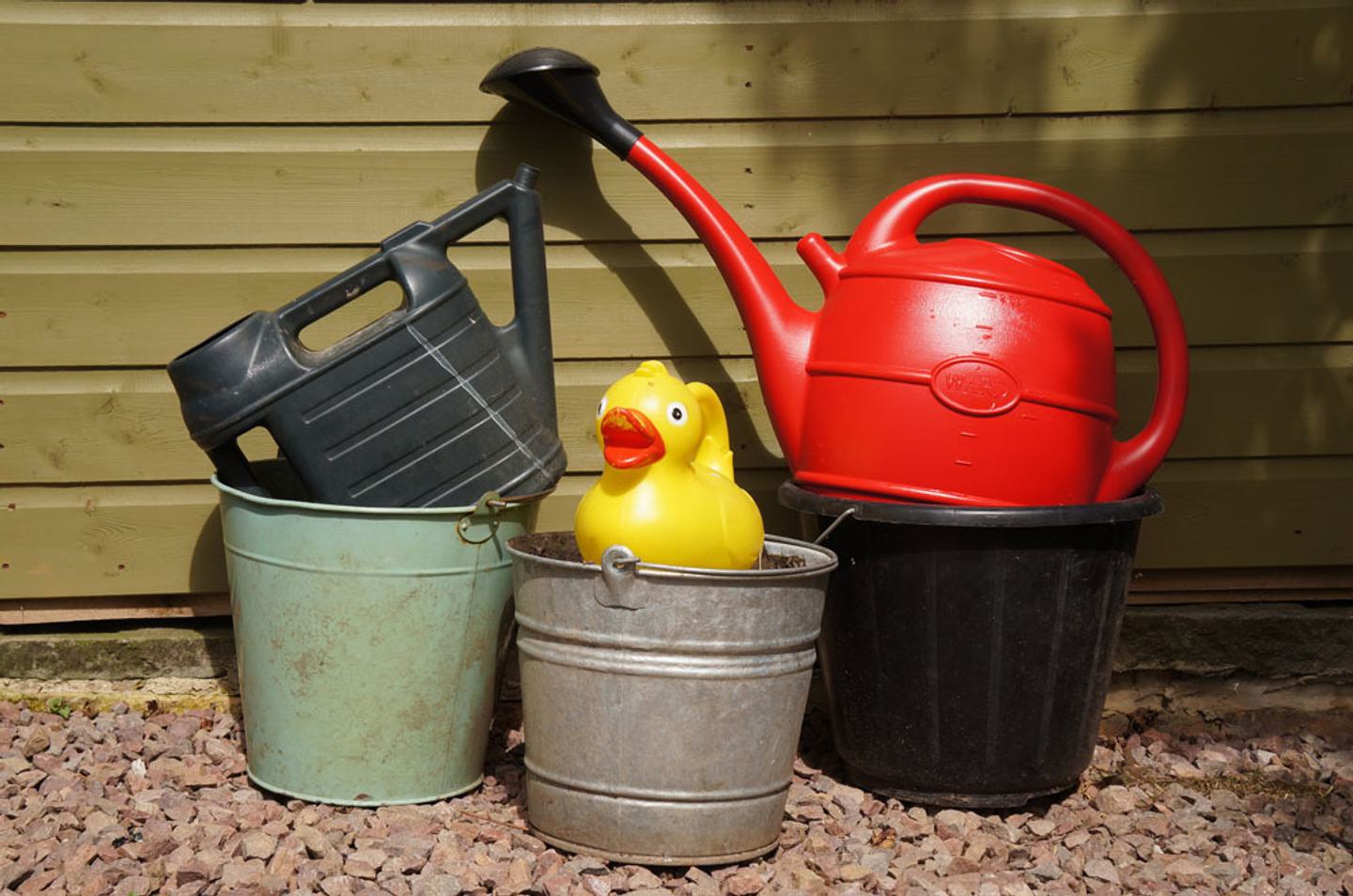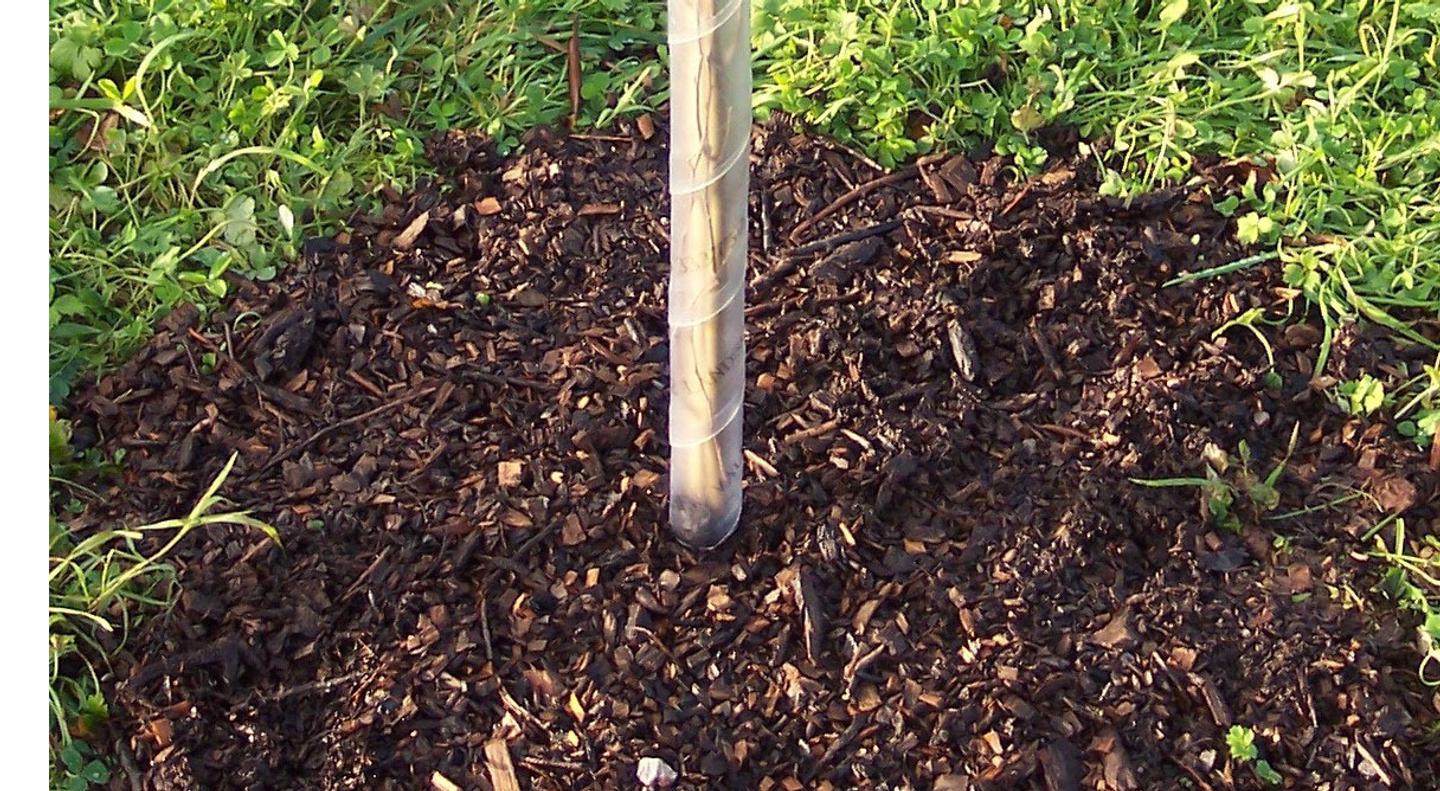Guides
Watering Trees & Shrubs
Newly planted trees, shrubs and hedges will need regular watering until they are well established. This can take a year or two, and you'll want to give them the best start during this time, so find out how much and when to water in this guide.

The chief things to remember are:
- Spring and summer are the key times to water
- Water newly planted trees heavily two or three times a week
- Increase watering in very hot weather
- Water pots every day
- Larger trees need MORE water, not less
- Water in the morning or evening
- Apply about a bucket's worth to a 15L pot size tree and twice this for a 30L
- Use mulch to conserve water and hinder weeds
When to water newly planted trees and shrubs
Immediately after planting
In spring and summer, water newly planted things immediately (known as 'watering in').
In autumn and winter, it depends how wet the ground is, or if rain is due. At this time of year, it's only really necessary to water in if we are experiencing a dry spell, to make sure the roots don't dry out.
In the first year after planting
From mid-March until the end of September, water plants two to three times a week. Increase this regime if we have a particularly hot and dry spell, and vice versa, reduce if the weather is very wet. Bear in mind that rain doesn't necessarily get to where it's needed, if the leaf canopy creates a 'rain shadow'. Dig down a little into the soil if you want to check how moist it is under the surface.
It's best not to water every day, but to let the ground dry out a little bit, encouraging roots to spread out in search of water. If a drought is on the horizon, however, consider beginning to water before things get dry.
In autumn and winter, watering isn't generally necessary, unless we have an unseasonally warm and dry period.
2-3 years after planting
After the first year, enough roots may have grown into the soil to allow the plant to drink up enough to support itself, but as a precautionary measure we recommend carrying on watering during dry spells. Monitor the plants to help you decide whether to water. If they begin to look at all floppy, drench them! Yellowing, dropping leaves, on the other hand, can indicate over watering (but not always).
You can water further away from the stem during this time, as the root zone will have widened out. Watering further away will also encourage roots to spread out.
Year 4 onwards
After three years, most trees and shrubs should have established well enough to not require watering except by that which comes from the heavens. That said, some things require a soil that doesn't dry out (e.g. Cryptomeria japonica), so keep an eye on these types of plant in periods of drought.
Time of day
It is most efficient to water early in the morning or in the evening, so sun and warmth don't undo your good work.
Peak watering times
Plants need most water when they are in active growth. Deciduous things, which lose their leaves in autumn, are in this state in spring and summer. Evergreen plants continue to grow in autumn and winter, but at a slower rate.
It's important that neither evergreen or deciduous plants dry out completely, at any time of year. This means that bare root plants should not be stored anywhere warm, and potted plants should be monitored if they are at risk of drying out.
Watering in the early morning or in the evening is most efficient.
Pots
In spring and summer, water plants still in their pots every day before they are planted. In autumn and winter, only water them if they appear to be getting dry.
You can tell if a pot is holding enough moisture because it will be heavy (if small enough to lift). If the pot feels light, it needs watering. Monitor the moisture content of very large pots by noting how the compost looks and feels at the top. It should be slightly claggy and fairly dark.
How much?
There is no straightforward answer to this question. The variability of soil types and weather conditions, plus the different water requirements of different species mean it is a question of judgement, in practical terms. However, the general idea is that you need to make sure the water you apply really penetrates the soil and reaches the roots. And a good soaking once a week is much better that a little sprinkle every day (which in fact can cause water to evaporate from the soil through a wicking effect, and encourages surface roots rather than deeper ones). Once water starts to accumulate on the surface of the soil, this indicates that things are going in the right direction.
In deciding when to stop watering, look at the size of the tree/shrub. Larger things need MORE water, not less. They are not more 'established' in the soil when newly planted. In fact, their potted root system is even less able to get enough water from the soil to support the top growth than that of a smaller tree, until it develops in the ground.
The following table gives a rough guide to how much it might take to get water to the roots of your tree/shrub, but look at your particular conditions (e.g. freely draining soil vs. slow-draining; moisture-loving plants vs. drought tolerant) and water accordingly.

Hose pipes vs. watering cans / bucket
We recommend measuring water and applying with either a watering can or a bucket (pouring slowly), simply because this allows you more control over the amount you apply. It also means you can use water collected in water butts, which will save on your mains water consumption!
Hose pipes are of course more practical when you have a lot to water, but please do not leave unattended. Overwatering suffocates roots and can be fatal for some plants.
Seep hoses and irrigation systems are useful for watering long hedgerows - seek professional advice from suppliers to get the most out of them.
Signs of underwatering include:
- lack of lustre on leaves; flat colour; pale, yellowing leaves
- crisping or brown leaves
- drooping branches
- dusty, light or cracked soil
Signs of overwatering include:
- yellowing and dropping leaves
- water pooling on soil surface for more than a few minutes
Mulching
Applying a 5cm layer of mulch, either bark chip or organic matter, is a great way to reduce moisture loss and reduce weeds around the base of your plants. We highly recommend this.

Containers
Containers easily dry out, which is why we only recommend planting small or slow-growing plants in them, as their water requirements are lowest. Water-retaining granules which slowly release moisture can be useful for reducing watering frequency.